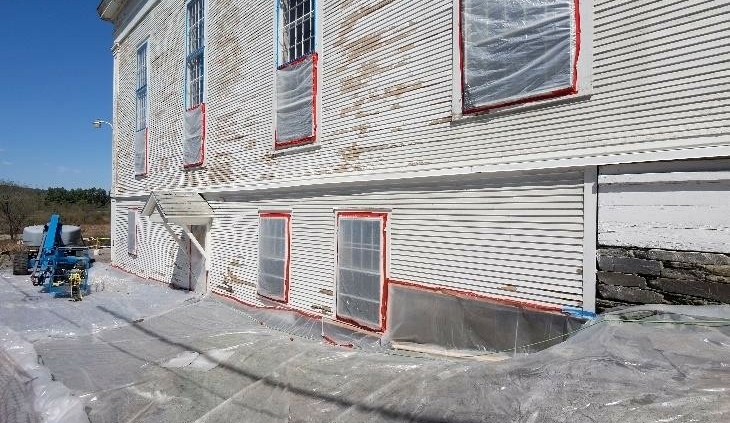The Hidden Hazards: How Lead Paint and Asbestos Can Affect Your Home Inspection
When it comes to buying or selling a house in the Charleston, SC area, a home inspection is a critical step. It’s not just about ensuring the foundation is solid and the roof doesn’t leak. Two hazardous materials, often lurking unseen but with potentially severe health implications, are lead-based paint and asbestos. Understanding how these substances can affect your home inspection is crucial for homeowners, buyers, and sellers alike.
The Legacy of Lead Paint
Lead-based paint was commonly used in homes built before 1978. When intact and undisturbed, it poses little risk. However, the danger arises when the paint deteriorates or is disturbed during renovations. Exposure to lead paint dust or chips can lead to severe health problems, especially in children, including developmental issues, learning disabilities, and even brain damage. Lead paint is found in many Charleston, SC homes due to the city’s historic locations and neighborhoods.
During a Home Inspection: People’s Choice Home Inspectors will look for peeling or chipped paint in older homes. They might use a portable device to test for lead on painted surfaces or suggest a professional lead inspection, especially if you plan to renovate.
The Asbestos Threat
Asbestos, once praised for its heat resistance and insulation properties, was widely used in various building materials like insulation, roofing, and tiles until the late 1970s. When asbestos-containing materials are intact and undisturbed, they’re generally not a significant risk. However, if these materials are damaged or disturbed, they can release asbestos fibers into the air. Inhaling these fibers can lead to serious health issues, including lung cancer, mesothelioma, and asbestosis. This material has been found in the Charleston, SC areas.
During a Home Inspection: Home inspectors, especially those in the Charleston, SC areas typically look for materials known to contain asbestos and check their condition. If they suspect asbestos, they will recommend a specialized asbestos inspection. This involves taking samples of the material to be analyzed in a lab.
Navigating Through the Inspection
Understand the Age of Your Home: If your home was built before 1978, there’s a higher chance it may contain lead paint or asbestos. Knowing this can help you anticipate the inspection process.
Hire a Qualified Charleston, SC Home Inspector: Ensure your home inspector is experienced and knowledgeable about lead paint and asbestos. They should be able to identify potential risks and advise on the next steps.
Consider Specialized Inspections: If there’s a suspicion of lead paint or asbestos, hiring professionals specializing in these areas is advisable. They can conduct thorough testing and provide guidance on remediation if necessary.
Plan for Remediation: If lead paint or asbestos is confirmed, consider your options for remediation. This might involve professional abatement services to safely remove or contain the hazardous material.
Disclosure and Document: If you’re selling your home and are aware of the presence of these materials, it’s crucial to disclose this information to potential buyers. Keeping records of all inspections, tests, and remediation work is also essential.
In conclusion, while lead paint and asbestos can add complexity to a home inspection, being informed and prepared can make the process smoother. Understanding the risks, hiring the right professionals, and addressing any issues proactively can ensure that your home is safe and compliant, preserving its value and ensuring the well-being of all occupants. Contact us if you need a licensed home inspector in the Charleston area!





Leave a Reply
Want to join the discussion?Feel free to contribute!